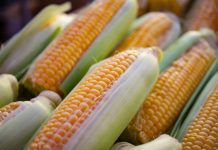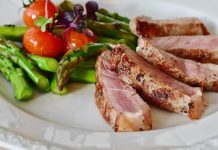We know iron is important, but do you know the best dietary sources? Read on to help plan a diet for iron deficiency.
Iron is an essential mineral in the human diet. It is the basic building block of hemoglobin, the portion of our red blood cells that carry oxygen throughout the body. Where do we get our iron from? A large portion of our iron is absorbed from the destruction of old red blood cells, with the remaining portion coming from our diet.
The National Institutes of Health recommends that the average adult male consume 8 milligrams of iron daily. For women the recommendation is 18 milligrams, for pregnant women it is a whopping 27 milligrams! In today’s world there seems to be a pill for everything, and why should that be any different for iron? Well, it isn’t. However, as with all medicines, there are side effects, so if you can get your iron naturally, wouldn’t you rather?
Iron sources: What are the different types?
In considering potential iron sources for your diet it is important to discern between the two different types of dietary iron available. Those two types being heme, and non-heme iron. The Centers for Disease Control and Prevention reports that heme iron is 2-3x more readily absorbed into the body than non-heme iron sources.
So are you destined to spend the rest of your days reading labels searching for iron content to ensure you are getting enough? While this may be a good way to pass the time, it is by no means necessary, just follow this simple guide!
Heme iron
As we discussed, heme dietary iron is the superior iron source. Where can you get heme iron? Heme iron is found only in animal sources, which unfortunately can be problematic for you vegetarians out there. Chicken livers contain one of the highest levels of heme iron, with over 12mg per serving, according to the National Institutes for Health. Not your first choice? Well don’t worry because beef usually has around 3mg per serving, chicken and turkey both fall in the 2mg per serving range as well. Fish tends to be at or below 1mg of heme iron per serving. Want a quick iron boost in a delicious package? A serving of breaded and fried oysters contains 4.5mg of iron! That’s more than half of the daily recommended intake for an adult male.
Non-heme iron
Just because heme iron is absorbed more readily than non-heme iron doesn’t mean that non-heme iron isn’t still important to your diet. Dark green leafy vegetables, iron-fortified cereals, beans, and whole wheat are all good sources of non-heme iron. Just how good? One cup of soybeans contains over 8mg of non-heme iron, while a half-cup of boiled spinach has just over 3mg.
For a full list of foods and their iron contents be sure to visit: http://ods.od.nih.gov/factsheets/iron/ . Remember a diet high in iron is healthy, but it can also be delicious!
If you suffer from iron-deficiency anemia, read more about treatments for iron deficiency anemia.
Disclaimer: The information contained in this article is for educational purposes only and should not be used for diagnosis or to guide treatment without the opinion of a health professional. Any reader who is concerned about his or her health should contact a doctor for advice.
Sources:
- National Institutes of Health; http://ods.od.nih.gov/factsheets/iron/
- Centers for Disease Control and Prevention; www.cdc.gov



